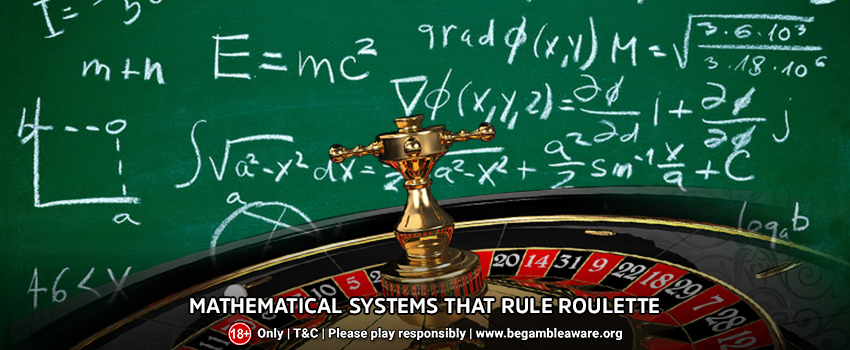Roulette can be perhaps the most well-known game in the casino regardless of whether players play it in a traditional casino or on the internet.
This is because, like other classic games, this one combines mathematical complexities into an in-game format that's easy to master and simple to grasp.
These mathematical equations and sums make this traditional game of casinos tick and will also help dispel certain Roulette myths that the numbers do not confirm.
Odds - Otherwise Known as Probabilities
Odds are an essential part of understanding how the table operates, as every spot on the felt where a player can place the chip has the odds specific to it.
For instance, when a player puts chips so that it crosses two numbers, it's known as the Split bet. If the ball lands on either number, it will do this with odds of 17/1 for the player.
The more numbers that bets cover will result in a decrease in odds. This can be observed with what's known as a Corner bet, in which 4 numbers will be covered with chips, and the odds automatically decrease to 8/1.
Percentages
Although many players at casinos prefer to think in decimals and fractions, some prefer using percentages when they attempt to figure out the best way to take on Roulette. Sometimes, a percentage can offer a better understanding of the likely consequences of a particular bet.
House Edge
Both percentages and odds combine to explain many of the mathematical elements that play out on a roulette table, regardless of whether it's a virtual table or one in real life.
One of them can be the edge of the house. This is the result of the reality that odds and the percentages involved with any form of Roulette always favor the house.
But, the most important thing to remember is that the house edge is different based on the particular Roulette variation playing. While all variations are equally enjoyable to play, players should consider these elements because each has unique mathematical nuances.
Debunking Roulette Myths
A solid understanding of math enables a player to dispel many of the myths and misconceptions that have been a part of gambling games like Roulette and Blackjack.
One of them is that a single streak of black or red numbers that a Roulette wheel produces can influence the way players should play the game. This implies that mathematical principles are continually modified as the game moves forward.
However, as this article has demonstrated, it isn't the scenario. However, odds, equations and percentages, and the house edge will always remain the same, no matter how the ball hits black or red.
Roulette Wheel Layout
The layout wheels did not occur by chance. It was meticulously planned and had certain features. There are two different configurations. There is an American wheel and a European wheel.
It is important to note that you will notice that the American wheel features two zeros. This is significant because it doubles the benefit to the casino.
On a European wheel, you can expect to lose, over the long term, 2.7% of any bet. If you play on an American wheel, you could be expected to lose 5.26 per cent.
The numbers are laid out in different ways on each wheel, but the patterns have some commonalities. The black and red numbers are alternated around the wheel on both wheels.
If you took out the zeroes, it is possible that the American wheel would display consecutive blacks and reds.
Wheels are arranged so that the lower numbers (1-18) and the higher numbers (19-36) are supposed to be able to alternate as often as they can.
On the European wheel, this rule is only in violation if the number 5 is placed between the number 10 (both lower numbers). There are numerous instances in which this rule is not followed in the American wheel.
Because of this, this American wheel is less balanced than that of the European wheel. Both wheels attempt to divide odd or even numbers as equally as possible. However, there are several instances of infractions to this law across both wheels.
In the European wheel, there are two more intriguing patterns of symmetries. First, all of the low red numbers and the high Black number are located on one side of zero, while the higher red numbers and the lower black ones are located on the reverse side.

